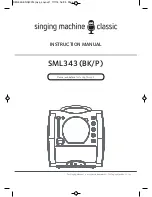
9
INCIDENT
ILLUMINATION
CONTROL
Operation
Illumination system
These microscopes come with an integrated illumination system with incident and transmitted light. For the
microscopes without integrated illumination systems it is possible to use an external cold light source. By
using the correct light is possible obtain the better image of your sample.
Before starting, read the section about electrical safety precautions. Then, insert the power cord and use the
brightness controls to turn on the lamps and control the light intensity.
The base is equipped with two clips that can be used to block the specimen.
Adjust interpupillary distance
Hold the right and left parts of the observation head by both hands and adjust the interpupillary distan¬ce by
moving the two parts until one circle of light can be seen. If two circles appear, the interpupillary distance is
too big, and if two overlapped circles appear, the interpupillary distance is too small.
Focus and regulation of the focusing tension
Put the sample to be observed on the plate and turn the zoom to the highest magnification using the bilateral
zoom knob. Try to focus the sample using the focusing knobs.
Dioptric compensation
This compensation makes it possible for people with glasses to adjust the microscope to their eyes and use
the microscope without glasses. Turn the zoom down to the lowest magnification. Adjust the diopter com
-
pensation ring of the right eyepiece tube until the image of the right eyepiece is clear and sharp. Repeat the
procedure for the left eyepiece. Then, check the focus of the image for the whole zoom range. It should now
be perfectly parfocal (focus is always maintained during the change of magnification).
Magnification and working distance
The total magnification varies from 1.75x to 180x depending on the eyepieces and auxiliary objectives used.
With the bilateral zoom knob, the user can change the magnification in a factor of 6.4 with perfect parfocality
and the image is always centred.
Select the desired magnification by adjusting the bilateral zoom knob. Change the eyepieces and/or add an
appropriate magnifying objective lens if necessary. The total magnification used can be calculated by the
following equation:
Total magnification = Eyepiece magnification x Zoom magnification x Objective lens magnification
Normal working distance for the standard configuration (1x objective lens) is 95 mm.
Video capturing (optional)
Two kinds of observation heads, binocular or trinocular, are available for the series. They can all be con-
nected to cameras via an adaptor, for digital and analogical photo and video capturing.
Before taking a picture or filming video, pull out the light path selector lever so the light will be deflected into
the photo tube. At the same time, no light will enter into the right eyepiece tube for observation. Please refer
to the adaptor and camera manuals for further details.










































